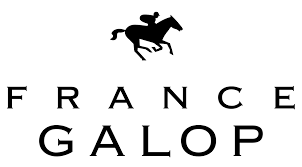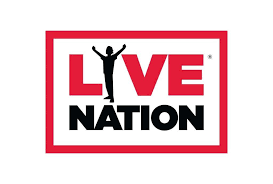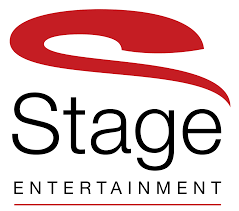Detailed content of our market study
 Inforamtion
Inforamtion
- Number of pages : ~ 40 pages
- Format : Digital and PDF versions
- Last update :
 Summary and extracts
Summary and extracts
1 Market overview
1.1 Market definition and key figures
Live performance, often referred to as the performing arts, refers to any form of entertainment presented to a live audience, in a variety of venues such as theaters, concert halls or even outdoors. This category includes a wide variety of artistic disciplines and performances, such as theater, dance, music, opera, circus, magic and street arts. The main characteristics of live performance are the real-time interaction between artists and audiences, and the ephemeral nature of performances, which exist only for the moment of their execution.
The live entertainment market in France is structured around the production and distribution of live shows. This market covers a variety of segments (comedy, song, opera, instrumental music, theater, circus, etc.) which, while they do not necessarily share the same customers (the same audience), do share, at least for the most part, the same values.while they don't necessarily share the same customers (the same audience), they do share, at least in part, the same production resources (venues, lighting, sound and set design, make-up, security, ticketing, advertising and promotion, entertainment workers, production, staging).
The live performance business involves a large number of players, with very different roles and sizes. While some very large operators, such as Live Nation or Stage Entertainment, cover the entire value chain, there are many smaller players focused on a specific link in the chain: venue managers, record majors, ticketing operators, production companies. Above all, this market relies on a vast, highly fragmented economic fabric, grouping together independent venues, festivals, technical assistance methese include independent venues, festivals, technical assistance companies, intermittent workers and groups of intermittent workers, artists, stage directors, security companies and more.
We note in particular that 6% of performances account for 49% of admissions and 65% of box-office receipts. Conversely, 60% of performances are given in small venues with fewer than 200 admissions, and account for 5% of box-office receipts. As a result, while this market may appear concentrated in terms of box-office receipts and admissions, it is absolutely atomized in terms of the number of performances and jobs.
Performances are also geographically concentrated in France, with the Ile-de-France region and Paris in particular occupying a predominant position, both in terms of number of performances and attendance, and in terms of box-office receipts.
In 2023, the Ministry of Culture estimated that the level of performing arts activity had increased by 19% between 2023 and 2022, to reach 1.99 billion euros in revenues, and recorded a 31% increase in revenues compared to the pre-covid period of 2019. In 2022, there were over 200,000 live performances, attracting 53 million spectators.
1.2 The European live performance market
In ****, the European live performance market was estimated at **.* billion euros, with very strong growth of +**.*% over the ****-**** period. The sector was severely impacted by the covid pandemic, and by ****, the European cultural and creative economyeuropean cultural and creative economy, which includes architecture, books, cinema, music, audiovisual, press, radio, video ...
1.3 The French live entertainment market is growing strongly
The live entertainment market experienced difficult times in **** and **** with the health crisis. However, the year **** marked a significant recovery from this terrible period.
In ****, the French Ministry of Culture estimated that the level of live performance activity had increased by **% between **** and **** (***), and recorded a **% increase in revenues compared to ...
1.4 The impact of the Covid-19 crisis on the live entertainment market
The Syndicat national du spectacle musical et de variété (***) predicts that the live entertainment sector will be hard hit by the crisis at the start of ****. Indeed, in the event of no shows being able to resume before January ****, the union estimates that the sector will lose *.* billion euros in ...
2 Demand analysis
2.1 Household consumption of leisure and culture
In ****, household consumption of cultural services will be worth ***.*** billion euros. Within this broad category is a sub-category of particular interest to us: "cultural services". This sub-category includes "Cinema, live shows, museums, audiovisual subscriptions, photo printing developments, etc.". [***] The latter represents the *th largest item of expenditure on leisure and culture ...
2.2 Consumption of live shows
A survey conducted by Harris Interactive for the French Ministry of Culture in December **** reports on the behavior of the French towards live performances. It also takes into account music, theater and comedy festivals. In ****, **% of French people said they attended a live performance once a year, excluding festivals. Music concerts ...
2.3 Demand strongly dependent on cultural capital
a survey carried out by Ifop in June **** informs us of the willingness of the French to attend live shows in the coming months, and highlights a greater appetite among socio-professional categories to go to live shows.
Do you intend to attend a music or theater festival and/or concerts and/or ...
2.4 The importance of the environment for French spectators
At a time when environmental protection and the fight against global warming have become crucial issues in recent years, the contribution of the entertainment sector to this cause is increasingly being questioned. As in the previous year, a significant majority of French people consider the commitment of shows and festivals to ...
3 Market structure
3.1 The different types of players in the sector
There are many different types of player in the live performance market:
Public players: either the State or local authorities. In ****, public spending accounted for **.*% of total performing arts sales in France. Performing arts companies, whether specialized in this field or integrated players present at different stages of the value chain. ...
3.2 Employment in the performing arts
In ****, the live performance sector employed more than ***,*** people, the vast majority of them working for live performance companies, and more than *,*** authors or content creators.
Workforce in the cultural and creative industries France, ****, in thousands and as a % of total Source: ****
Source: ****
In ****, there were over **,*** companies in France specializing ...
3.3 Sector concentration
In ****, the Centre National de la Musique has published a report on the activity of musical and variety shows. However, given the complicated context of **** and **** for the sector, which does not reflect the current situation in light of the lifting of restrictions, this same report is based mainly on **** to ...
3.4 The different venues and their characteristics
Venues more geared to pop or variety concerts:
Source: ****
More classic venues :
Source: ****
4 Offer analysis
4.1 Offer typology
There is a very wide range of live performances, from a contemporary music concert to an opera performance, a festival, a play or a comedy show.
Breakdown of paid performances by type France, ****, in % Source: ****
Rap, hip hop, reggae shows or electronic music and pop rock concerts are the types of ...
4.2 Overview of prices and costs
Prices vary widely according to the type of performance: the average price ranges from €** for jazz, blues and improvised music to €** for cabaret.
Average ticket price excluding tax per paid admission France, ****, in Source: ****
Live performance costs
For any show, we need to calculate its production cost (***).
> Production costs
Many ...
5 Regulations
5.1 Regulations for entertainment companies
This entire section is taken directly from the Guide des obligations socialesissued by the French Ministry of Culture. All legal obligations are listed in this guide.
"There are several legal obligations for entertainment contractors. They are summarized below:
You must register your company with URSSAF Hold an entertainment contractor's license, ...
5.2 Show regulations
"Prior to the start of a show, a number of formalities must be completed:
Declaration prior to hiring employees Application for an object number Drawing up an employment contract Check that the employee is in possession of a medical fitness certificate less than two years old, issued by the occupational medicine ...
5.3 Obligations of the show entrepreneur
"The show entrepreneur must also ensure in particular :
Payment of intellectual property rights (***) Use a ticketing system that complies with the relevant standards and is subject to : VAT at the reduced rate of *.*%, in particular for theater, song and poetry shows, circuses, concerts, variety shows (***), choreographic or lyrical shows, with ticket ...
6 Positioning the players
6.1 Segmentation
As we have seen, the live performance market is concentrated in terms of revenues and admissions, but absolutely atomized in terms of the number of performances and jobs.
The most important players, in terms of size and sales, are :
Integrated players in the live entertainment sector, covering the entire value chain, ...
- Live Nation France
- Fimalac Entertainment
- Lagardère groupe
- Vivendi
- Gérard Drouot Production
- STAGE Entertainment
- Warner Music Group
- Sony Music Entertainment France
- Ticketmaster France
- Digitick (Vivendi)
- AEG Anschutz
- L’Olympia
- Accor Arena (Accor groupe)
- Le Lido Cabaret (Accor groupe)
- Le Cirque du Soleil
- France Galop
- Decibel Production (Warner Group)
- Movinmotion
- Angers Nantes Opéra
 List of charts presented in this market study
List of charts presented in this market study
- Percentage of the population attending a live performance at least once a year
- Percentage of the population attending a live show at least once a year
- Percentage of the population attending a theatrical, operatic or classical music performance at least once a year
- Percentage of the population attending a live performance at least once a year, by age group
- Reasons for going to a live performance
All our studies are available online in PDF format
Take a look at an example of our research on another market!
Latest news
Companies quoted in this study
This study contains a complete overview of the companies in the market, with the latest figures and news for each company. :
 Choosing this study means :
Choosing this study means :
Access to more than 35 hours of work
Our studies are the result of over 35 hours of research and analysis. Using our studies allows you to devote more time and added value to your projects.
Benefit from 6 years' experience and over 1,500 industry reports already produced
Our expertise enables us to produce comprehensive studies in all sectors, including niche and emerging markets.
Our know-how and methodology enable us to produce reports that offer unique value for money.
Access to several thousand articles and paid-for data
Businesscoot has access to all the paid economic press as well as exclusive databases to carry out its market research (over 30,000 articles and private sources).
To enhance our research, our analysts also use web indicators (semrush, trends, etc.) to identify market trends and company strategies. (Consult our paying sources)
Guaranteed support after your purchase
A team dedicated to after-sales service, to guarantee you a high level of satisfaction. +44 238 097 0676
A digital format designed for our users
Not only do you have access to a PDF, but also to a digital version designed for our customers. This version gives you access to sources, data in Excel format and graphics. The content of the study can therefore be easily retrieved and adapted for your specific needs.
 Our offers :
Our offers :
the performing arts market | France
- What are the figures on the size and growth of the market?
- What is driving the growth of the market and its evolution?
- What is the positioning of companies in the value chain?
- Data from several dozen databases
Pack 5 études (-15%) France
- 5 études au prix de 75,6€HT par étude à choisir parmi nos 800 titres sur le catalogue France pendant 12 mois
- Conservez -15% sur les études supplémentaires achetées
- Choisissez le remboursement des crédits non consommés au terme des 12 mois (durée du pack)
Consultez les conditions du pack et de remboursement des crédits non consommés.



 Sony aims to consolidate its presence in webtoons and digital manga - 13/05/2024
Sony aims to consolidate its presence in webtoons and digital manga - 13/05/2024
 France Galop aims to revive horse racing. - 27/03/2024
France Galop aims to revive horse racing. - 27/03/2024
 Decibel Production: Pierre-Alexandre Vertadier ahead of the music - 06/03/2024
Decibel Production: Pierre-Alexandre Vertadier ahead of the music - 06/03/2024
 Behind ACDC's return to France is Gérard Drouot Productions GDP, a show producer for 38 years - 24/02/2024
Behind ACDC's return to France is Gérard Drouot Productions GDP, a show producer for 38 years - 24/02/2024
 Music: billions in the concert business - 04/01/2024
Music: billions in the concert business - 04/01/2024





















